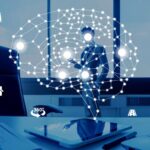
In the dynamic world of transportation and logistics, staying ahead of the curve is crucial for trucking companies aiming to optimize their operations. The advent of technology has brought about significant changes, with trucking apps emerging as invaluable tools for streamlining processes and enhancing overall efficiency. In this exploration, we delve into the impact of the latest truck apps, from dispatching to the final delivery stages, and how they contribute to operational optimization.
The Evolution of Trucking Operations
Challenges in Traditional Trucking
Traditional trucking operations often faced challenges related to manual processes, communication gaps, and a lack of real-time visibility. Dispatchers relied heavily on phone calls and paperwork to coordinate routes, leading to potential delays and inefficiencies. As the industry evolved, the need for a more integrated and tech-driven approach became evident.
The Rise of Truck Apps
The introduction of truck apps marked a transformative moment for the industry. These applications leverage the power of technology to provide a comprehensive solution for managing various aspects of trucking operations. From route optimization to real-time tracking, the latest truck apps are designed to address the unique challenges faced by drivers, fleet managers, and dispatchers.
Enhancing Dispatch Operations with Trucking Apps
Efficient Route Planning
One of the primary features of truck apps is efficient route planning. Dispatchers can input delivery locations, and the app utilizes advanced algorithms to suggest the most optimal routes. This not only minimizes travel time but also contributes to fuel efficiency, reducing operational costs for trucking companies.
Real-Time Communication
Truckapps facilitate real-time communication between dispatchers and drivers, overcoming the limitations of traditional methods. Dispatchers can provide instant updates on route changes, delays, or additional instructions, allowing for quick and informed decision-making. This level of communication is crucial for adapting to unforeseen circumstances and optimizing the overall delivery process.
Empowering Drivers on the Road
Navigation Assistance
For drivers, navigating unfamiliar routes can be a significant challenge. Truk apps come equipped with navigation features tailored to the specific requirements of large vehicles. These apps consider factors such as truck size, weight restrictions, and road conditions, providing drivers with accurate and safe route guidance.
Electronic Logging and Documentation
Trucking apps streamline the tedious task of logging hours and maintaining documentation. Electronic logging features ensure compliance with regulations and reduce the risk of errors associated with manual record-keeping. This not only saves time for drivers but also helps companies maintain regulatory compliance.
Real-Time Tracking for Improved Visibility
Visibility Across the Supply Chain
One of the game-changing aspects of modern truck apps is real-time tracking. From the moment a truck leaves the distribution center to the final delivery destination, all stakeholders have visibility into the current location and status of the shipment. This transparency enables better coordination and allows for proactive decision-making in response to any unexpected events.
Customer Transparency
Real-time tracking also extends to customers awaiting deliveries. Truck apps provide customers with accurate information on the estimated arrival time of their shipments. This transparency enhances customer satisfaction by managing expectations and allowing recipients to plan accordingly.
Fleet Management and Optimization
Vehicle Maintenance Scheduling
Truck apps contribute to fleet management by automating vehicle maintenance scheduling. By tracking mileage, engine hours, and other relevant metrics, these apps can generate timely alerts for scheduled maintenance tasks. Proactive maintenance not only extends the lifespan of vehicles but also reduces the likelihood of breakdowns on the road.
Performance Analytics
Truck apps provide valuable performance analytics that enable fleet managers to assess driver performance, fuel efficiency, and overall operational metrics. By analyzing this data, companies can identify areas for improvement, implement training programs, and optimize their fleet operations for maximum efficiency.
Choosing the Right Trucking App for Your Operation
Assessing Specific Needs
Selecting the right truck app involves a careful assessment of your company’s specific needs and operational requirements. Consider factors such as the size of your fleet, the type of goods you transport, and the level of integration required with existing systems. An app that aligns with your unique needs will deliver the most value to your operations.
User-Friendly Interface
A user-friendly interface is crucial for the successful implementation of a truck app. Drivers and dispatchers should be able to navigate the app with ease, minimizing the learning curve and ensuring seamless integration into daily operations. Look for apps that prioritize intuitive design and offer user support to facilitate a smooth transition.
In Conclusion
The latest trucking apps are transforming the landscape of the transportation industry, optimizing operations from dispatch to delivery. By addressing challenges associated with route planning, communication, and real-time visibility, these apps empower trucking companies to enhance efficiency, reduce costs, and improve overall customer satisfaction. As the industry continues to embrace technology, the role of truck apps in shaping the future of logistics cannot be overstated. By leveraging the power of these innovative tools, trucking companies can navigate the road ahead with confidence and efficiency.











